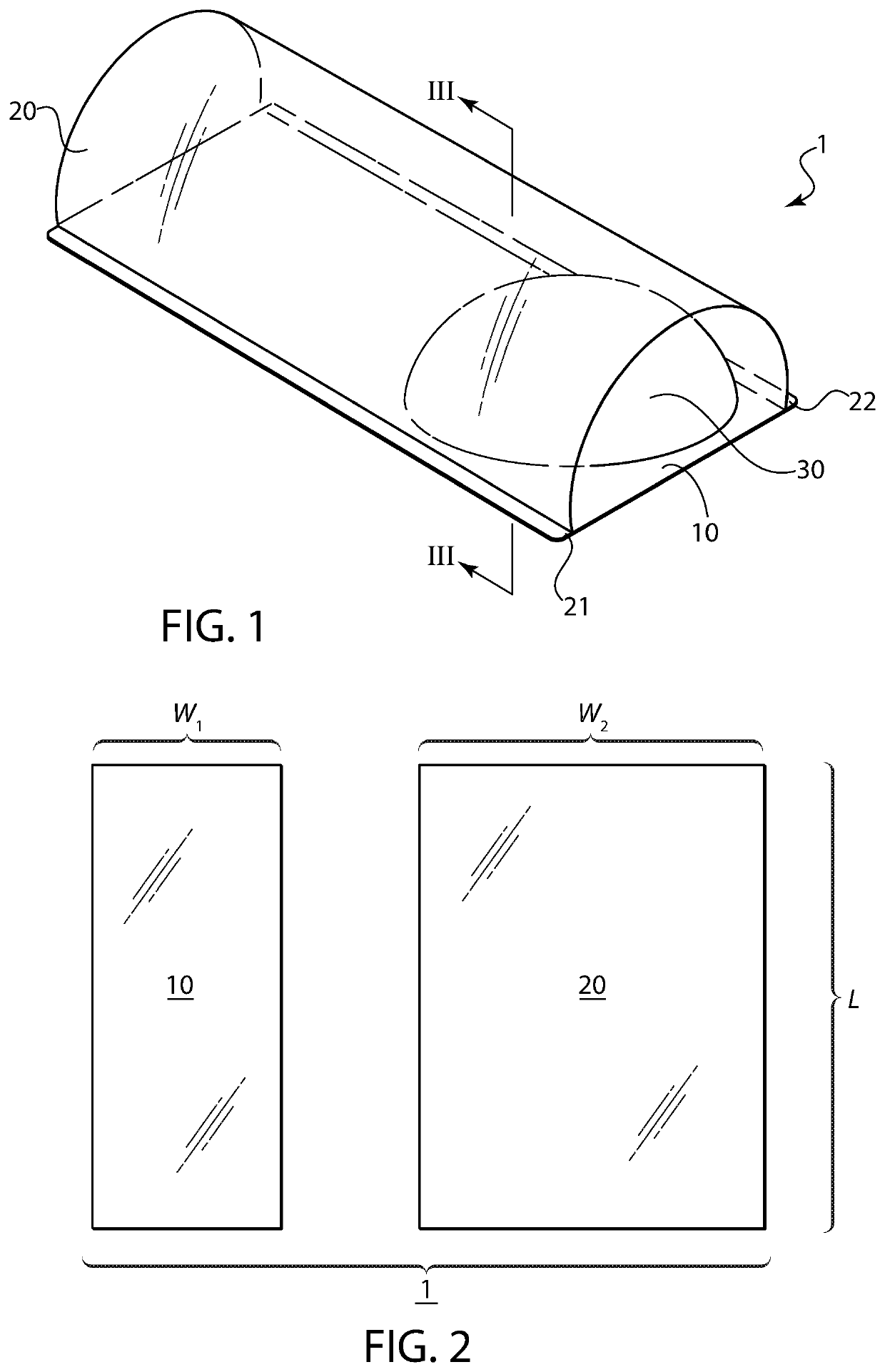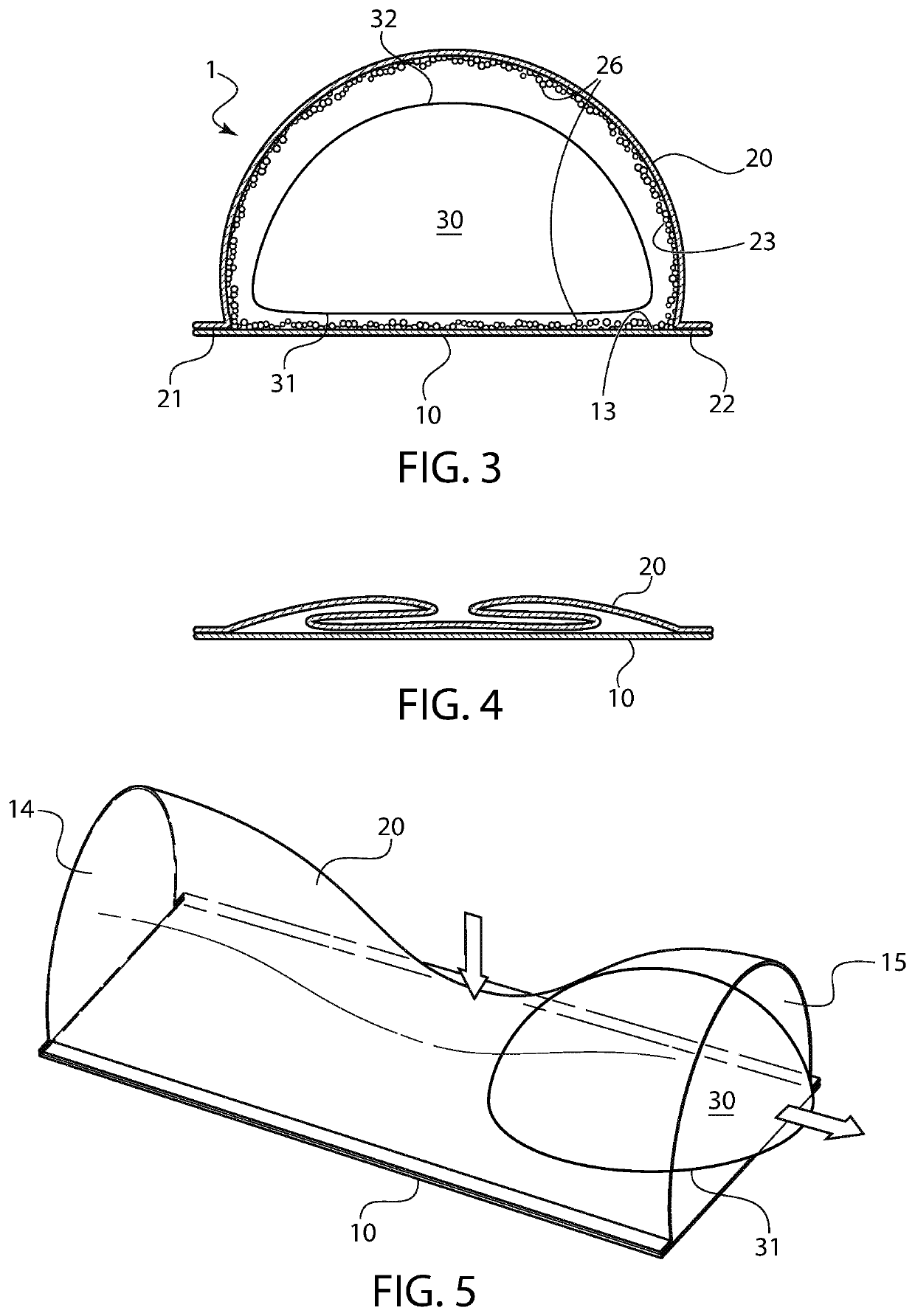Device for delivering silicone prosthesis into a surgical pocket
a technology for silicone prostheses and surgical pockets, applied in the field of delivery devices, can solve the problems of later shell and implant breakdown, long scars, and inability to fully fit the patient,
- Summary
- Abstract
- Description
- Claims
- Application Information
AI Technical Summary
Benefits of technology
Problems solved by technology
Method used
Image
Examples
Embodiment Construction
[0021]FIG. 1 shows the device 1 according to the invention. Device 1 is in the form of a sleeve having a flat bottom portion 10 and a rounded top portion 20, which is connected to bottom portion 10 via two seams 21, 22. An implant 30 can be placed inside the lumen of the device 1, as shown. As can be seen in FIG. 2, the bottom portion 10 is formed of a flat rectangle having the same length L as the top portion 10, but a smaller width W1 than the width W2 of top portion 20.
[0022]Device 1 is preferably constructed of a transparent film material that is pliable. Top portion 20 can be made of a different material than bottom portion 10. Top portion 20 is preferably made of a stretchable material. Bottom portion 10 can be made thicker and less pliable for enhanced stability. Top portion 20 is connected to bottom portion 10 via seams 21, 22, which can be formed by heat sealing or any other suitable method.
[0023]As shown in FIG. 3, an implant 30 can be placed inside device 1, so that the b...
PUM
 Login to View More
Login to View More Abstract
Description
Claims
Application Information
 Login to View More
Login to View More - R&D
- Intellectual Property
- Life Sciences
- Materials
- Tech Scout
- Unparalleled Data Quality
- Higher Quality Content
- 60% Fewer Hallucinations
Browse by: Latest US Patents, China's latest patents, Technical Efficacy Thesaurus, Application Domain, Technology Topic, Popular Technical Reports.
© 2025 PatSnap. All rights reserved.Legal|Privacy policy|Modern Slavery Act Transparency Statement|Sitemap|About US| Contact US: help@patsnap.com


